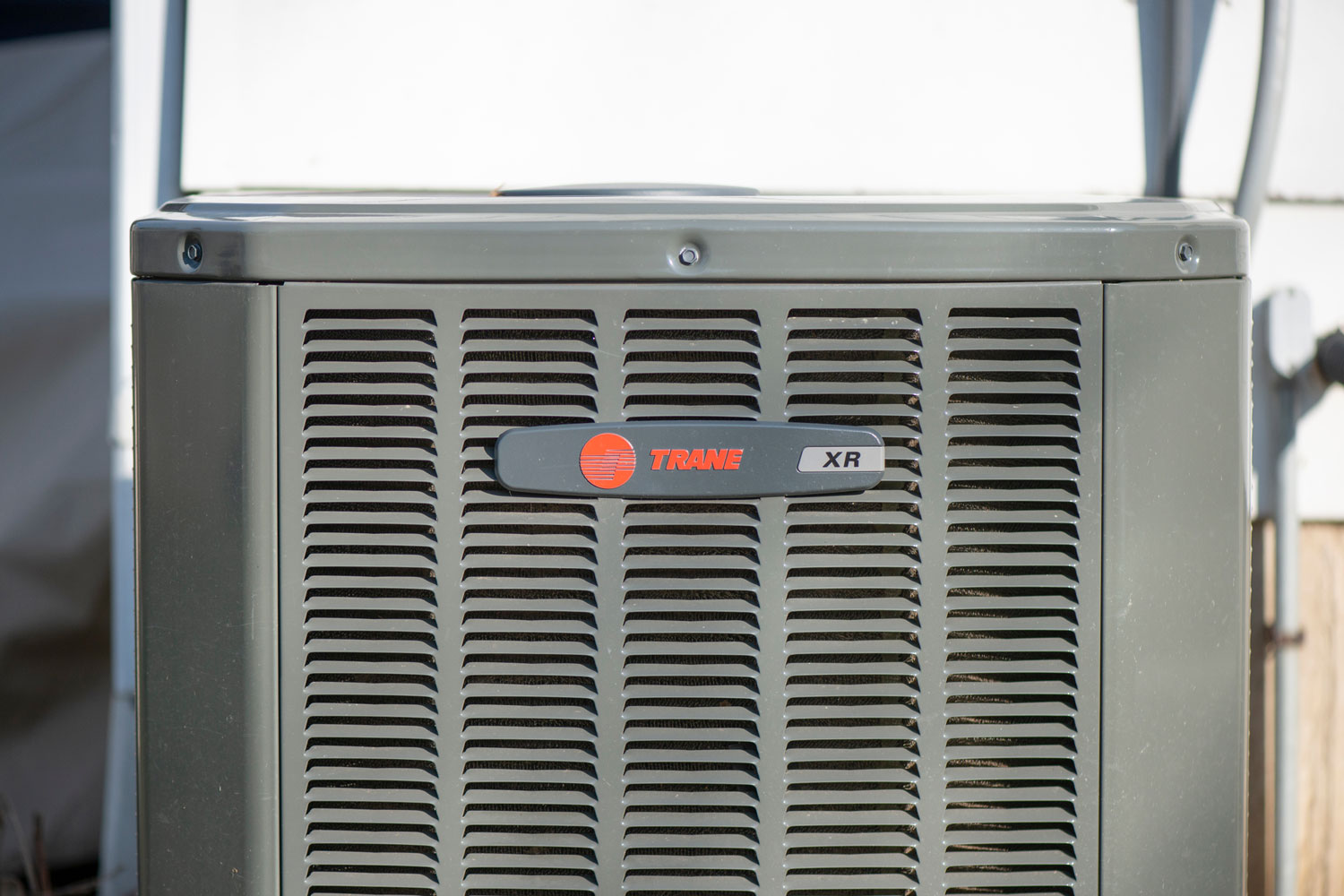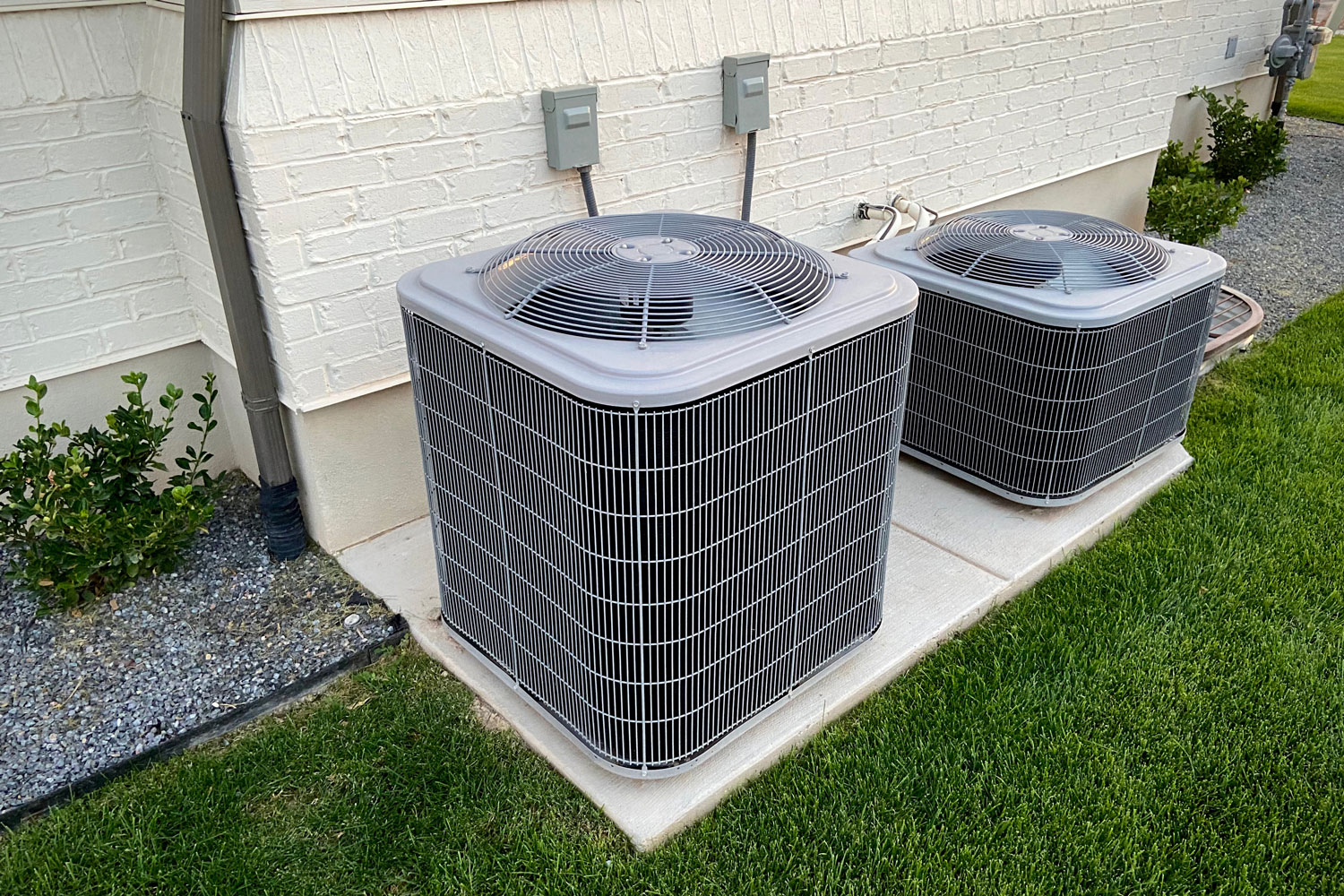Knowing the SEER rating of your Trane air conditioner helps you decide whether it's time for an upgrade. But is it indicated on your unit? If so, where exactly is it? We've got the answer right here for you.
The SEER rating of your Trane air conditioner on the yellow and black energy guide sticker is located along the side of the condensing unit outside your home. If it's not there, you can look for the model number of your AC which also indicates the SEER rating.
Still can't find the SEER rating? Keep reading! We'll list more ways for you to determine the SEER rating of your Trane air conditioner. We'll also talk about all things SEER rating-related to help you find out if your current unit has the ideal rating.

Definition of SEER Rating
SEER stands for Seasonal Energy Efficiency Ratio, which refers to the cooling output of your AC unit divided by how much energy it uses. This number is calculated over an entire cooling season by measuring constant indoor temperature against a range of outdoor temperatures.

A higher SEER rating indicates higher energy efficiency. This is because a system with a high SEER rating uses less electricity to generate cooling.
Ways to Find SEER Rating
If you can't find the SEER rating of your Trane air conditioner on the energy guide sticker, you can refer to its model number and the serial number. These are located on the data plate on the side of the compressor. You'll have to go outside to see this as it's located on the condensing unit of your AC.
Once you have the model number and serial number, you can go online to find a certified dealer in your area and ask them about the SEER rating of your specific unit. Make sure to refer to your model number and serial number.
If you have an older unit, you may need to consult a manufacturer directly to find out what your unit's SEER rating is. You can also find the SEER rating on the information sheet attached to the front of the air handler. Another way to find it is to consult the building permit for your air conditioner installation.
Calculation of SEER Rating
Now you can calculate the SEER rating manually to determine the energy efficiency of your unit. Here's how to do it:
- Determine the BTUs (British Thermal Units) per hour of your cooling system. You can find this in your owner's manual or on your unit. You can also opt to calculate it yourself.
- Determine the watts used per hour of your cooling system. You can also find this on your owner's manual or on your unit. As with the BTUs, you can also opt to calculate it yourself.
- Multiply the BTUs of your cooling system by 1,000 hours (equivalent to 4 months).
- Multiply the watts used per hour of your cooling system by 1,000 hours.
- Divide the result of Step 3 by the result of Step 4 to determine the SEER rating.
To find out how your SEER rating affects your annual electricity costs, you can follow this formula:
- Multiply your system's SEER rating by 1000 hours.
- Multiply the result by your electric rate to get the annual projected operating costs of your home's cooling system.

Benefits of High SEER Ratings
HVAC experts and homeowners consider purchasing a higher SEER-rated unit a great, worthwhile investment. While there are several other factors that contribute to the unit's overall energy efficiency, a good SEER rating makes a huge difference in the amount of energy your unit uses.
Here are a few advantages of AC units with high SEER ratings:
1. Lower monthly bills
Because an AC with a high SEER rating needs less energy input to cool your home, it helps you save more money on monthly electricity bills! You can expect to save anywhere from 20% to 50% more when you have a higher-efficiency unit, which is equivalent to thousands of dollars in savings yearly.
So while units with higher SEER ratings tend to cost more upfront, they can help you cut back on expenses down the road.
2. Environment-friendly option
Want to make your home more eco-friendly? Getting an AC unit with a high SEER rating makes a huge difference in upgrading to sustainable living! Because it's designed to save energy, there will be a significant reduction in your AC system's greenhouse gas emissions and fossil fuel use.
3. Available incentives and rebates
Since AC units with high SEER ratings are more environmentally friendly, you can get government incentives or manufacturer rebates from purchasing one. So you might end up spending as much money on a higher-efficiency unit as you would on a regular lower-efficiency unit.
4. Better performance
A high SEER air conditioner will typically have a two-stage compressor and a variable-speed blower, meaning it offers faster and more even cooling for your home.
It will also remove moisture from the air more efficiently to control humidity and deliver greater comfort, especially during the summer months.
Higher-efficiency units also tend to cool down rooms faster than old, low-efficiency units.
5. Increased longevity
Newer AC units with high SEER ratings can run up to as low as 25% of their capacity, so you don't have to keep turning the unit on and off. As a result, there's less wear and tear on the system, extending its lifespan so you won't have to replace it as soon as you would a lower-rated AC unit.

Trane Air Conditioner Units with High SEER Ratings
Trane is among the leading brands on the air conditioner market today, and for a good reason. Not only are their units known to be reliable with quiet and efficient operation, but they also boast high SEER ratings for many of their top-notch models.
Here are a few of Trane's air conditioner units with the highest SEER ratings:
- Trane XV20i
- Up to 22 SEER
- Variable-speed
- Energy Star-qualified
- Trane XV18
- Up to 18 SEER
- 57 dBA sound level for quiet operation
- Energy Star-qualified
- Trane XR17
- Up to 18 SEER
- Two-stage cooling technology
What is considered a good SEER rating?
In 2015, the minimum SEER rating required for air conditioner units was raised from 10 to 13 for the Northern US and 14 for the Southern US.
Typically, anything higher than the minimum required is already a good rating, with 14 to 18 SEER units being the most commonly purchased. Most units that are Energy Star-qualified make great choices for energy-efficient air conditioner units, as they are required to have a rating of 14.5 or higher.
Keep in mind, though, that a unit's SEER rating is its maximum efficiency. This means that the unit won't always run at that capacity, and it may be lower at certain times depending on a number of factors, such as the weather outside.
This means that it's best to opt for a higher SEER number so that its SEER won't go lower than the minimum.
Does higher SEER mean colder air?
No, AC units with higher SEER ratings don't generate colder air. They do use less electrical energy and often run at lower capacities so you can enjoy consistent cooling without having to turn the unit on and off.
They also tend to cool down the surrounding environment faster. However, this does not equate to colder air.
Is it worth going from 14 SEER to 16 SEER?
An AC unit with a 16 SEER rating is about 13% more efficient than an AC unit with a 14 SEER rating. This means a 16 SEER unit uses significantly less energy than a 14 SEER one, so you'll get to save more on monthly bills.
Of course, a 16 SEER unit would cost around $400 to $500 more upfront than a 14 SEER unit. However, a 16 SEER unit would save you around $150 to $200 on electricity bills every year.
Given that air conditioners typically last 20 years, your overall expenses over these decades, including the upfront price and monthly bills, will be lower if you buy a 16 SEER unit.
Is 21 SEER worth the money?

A 21 SEER air conditioner would cost around $2,000 more than a 16 SEER air conditioner. But again, your savings on monthly electricity bills over the years make it a worthwhile investment. Over 20 years, you can expect to save at least $1,500. Energy rebates can also reduce the upfront price.
In addition, a 21 SEER air conditioner would also offer greater indoor comfort. Since most air conditioners with high SEER ratings have two-stage compressors, you're less likely to experience uneven cooling and high humidity levels if you purchase one.
All in all, a 21 SEER air conditioner is worth the extra money, especially if you use your air conditioner frequently.
The Wrap-Up

Learning the SEER rating of your Trane air conditioner can help you determine how much you're spending on monthly energy bills and whether you can cut down on these expenses by purchasing a new one. Remember to choose a unit with as high a SEER rating as your budget can accommodate.
Found this post helpful? We've got a few more articles you might like:
Do Furnaces Have SEER Ratings?
How Much Power Does A Portable Air Conditioner Use? [By BTU]
